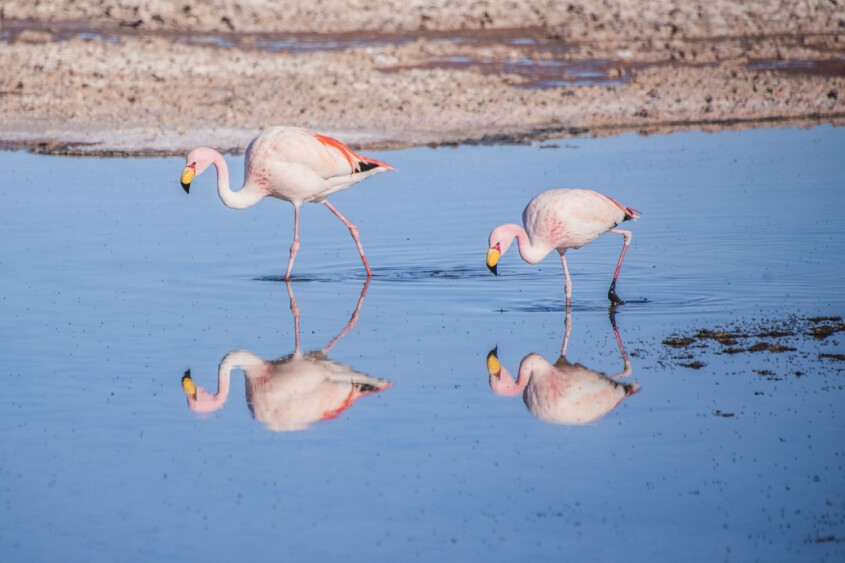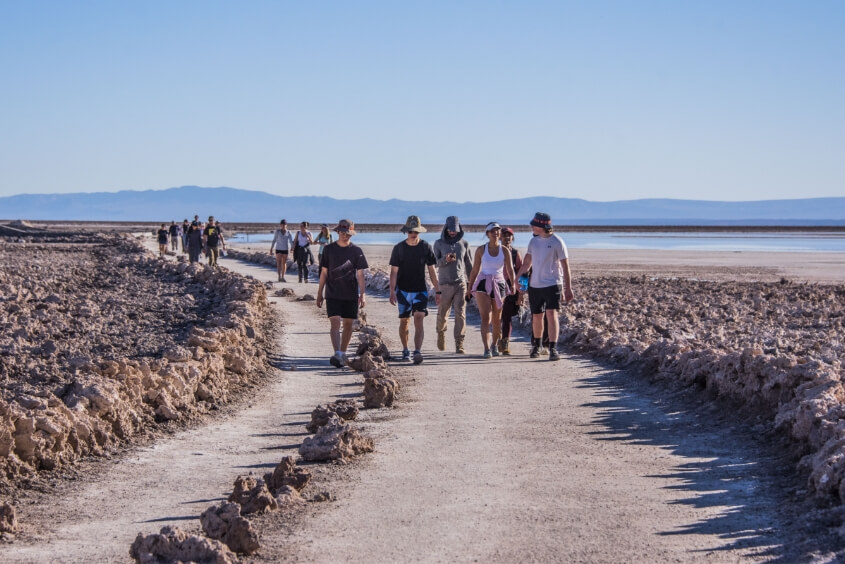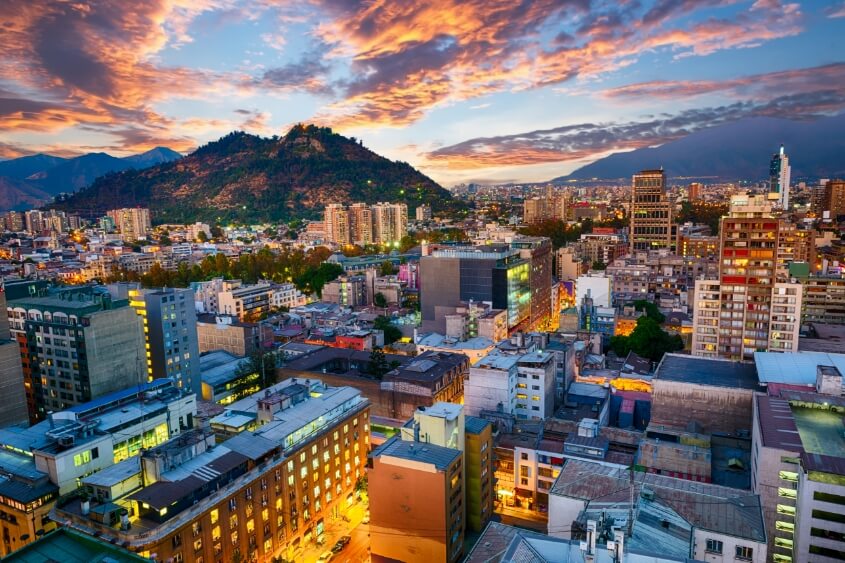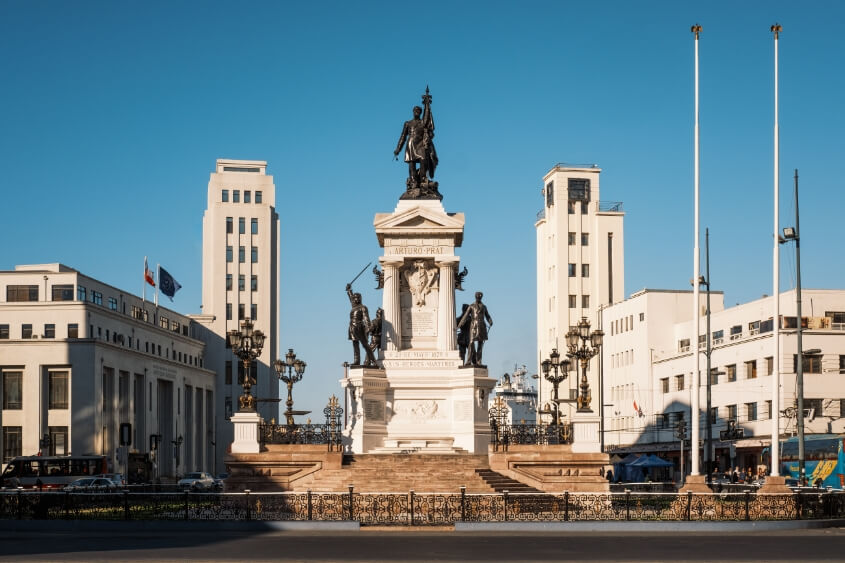Chile
Climate Impacts & Sustainable Solutions
Travel to western South America and explore how climate change is affecting the diverse landscapes and communities of Chile—from increased tsunami risks to the impacts of lithium mining, an essential piece of the green energy transition. Meet with scientists and professionals to delve into how natural resource management, public policy, and other strategies are being used at the local and national levels to address these climate challenges. During your time in metropolitan Santiago, the coastal port of Valparaíso, and the stunning Atacama Desert, immerse yourself in local communities, bond with fellow climate-conscious peers, and embark on adventures in these varied landscapes. Return home with new scientific, technical, social, and economic perspectives on climate issues.
- Highlights
• Sandboard on coastal dunes and walk among impressive geysirs
• Explore the Chilean desert and how a global energy transition impacts this environment
• Observe flamingos in the famous salt flats of the Atacama Desert
Expert
Itinerary
This itinerary represents our best projection of the group’s schedule. However, we may implement changes designed to improve the quality of the program.
Meet your fellow high school student travelers and one or more of your program leaders in Miami, and fly together to Santiago, Chile. To learn more about how we organize travel, click here.
Begin in Santiago, Chile’s bustling capital, situated between dramatic Andean peaks and the Pacific Ocean. Meet your program expert, and join a workshop on risk management and natural disasters. Travel south to the historic mining town of Sewell, and discover the importance of copper and lithium mining to Chile’s economic development. Visit a neighborhood outside Santiago where community organizations have built and maintain retaining pools to prevent annual flooding. Travel to the nearby coastal city of Valparaíso, and meet the Hydrographic and Oceanographic Service of the Navy for a field discussion on tsunami risk, warning systems, and lessons learned from past natural disasters. Learn about the importance of the Humboldt current to Chile’s economy and food culture, and sandboard on impressive dunes overlooking the Pacific. In both cities, explore colorful streets and vibrant histories, learn the stories behind the street art that covers each building, and build connections with the people and cultures on the front lines of these climate risks.
Travel north to the Atacama Desert, one of the richest regions in the world for copper and lithium and also the driest non-polar desert on earth. This region is home to unique and diverse landscapes: explore a pre-Hispanic settlement in the mountains, walk expansive salt flats home to three different species of flamingos, and venture to the highest geothermal geyser field in the world. Through meetings with local contacts, learn about the complex impacts of the extraction industry on local climates, namely drought and water contamination, as well as the important role these raw materials play in driving the global energy transition. Learn about responsible mining initiatives in Andean countries and the measures introduced by the Chilean Government to help the country adapt to hotter and drier conditions in the near future. Present your independent projects, and enjoy a final celebration dinner with your group before returning home.
Fly from Calama, Chile, to Miami by way of Santiago with your group and a leader, then continue on to your final destination. To learn more about how we organize travel, click here.
Itinerary
This itinerary represents our best projection of the group’s schedule. However, we may implement changes designed to improve the quality of the program.
Meet your fellow high school student travelers and one or more of your program leaders in Miami, and fly together to Santiago, Chile. To learn more about how we organize travel, click here.
Begin in Santiago, Chile’s bustling capital, situated between dramatic Andean peaks and the Pacific Ocean. Meet your program expert, and join a workshop on risk management and natural disasters. Travel south to the historic mining town of Sewell, and discover the importance of copper and lithium mining to Chile’s economic development. Visit a neighborhood outside Santiago where community organizations have built and maintain retaining pools to prevent annual flooding. Travel to the nearby coastal city of Valparaíso, and meet the Hydrographic and Oceanographic Service of the Navy for a field discussion on tsunami risk, warning systems, and lessons learned from past natural disasters. Learn about the importance of the Humboldt current to Chile’s economy and food culture, and sandboard on impressive dunes overlooking the Pacific. In both cities, explore colorful streets and vibrant histories, learn the stories behind the street art that covers each building, and build connections with the people and cultures on the front lines of these climate risks.
Travel north to the Atacama Desert, one of the richest regions in the world for copper and lithium and also the driest non-polar desert on earth. This region is home to unique and diverse landscapes: explore a pre-Hispanic settlement in the mountains, walk expansive salt flats home to three different species of flamingos, and venture to the highest geothermal geyser field in the world. Through meetings with local contacts, learn about the complex impacts of the extraction industry on local climates, namely drought and water contamination, as well as the important role these raw materials play in driving the global energy transition. Learn about responsible mining initiatives in Andean countries and the measures introduced by the Chilean Government to help the country adapt to hotter and drier conditions in the near future. Present your independent projects, and enjoy a final celebration dinner with your group before returning home.
Fly from Calama, Chile, to Miami by way of Santiago with your group and a leader, then continue on to your final destination. To learn more about how we organize travel, click here.
Leaders
Meet some of our featured leaders. Please note that these may not be your leaders for the program.
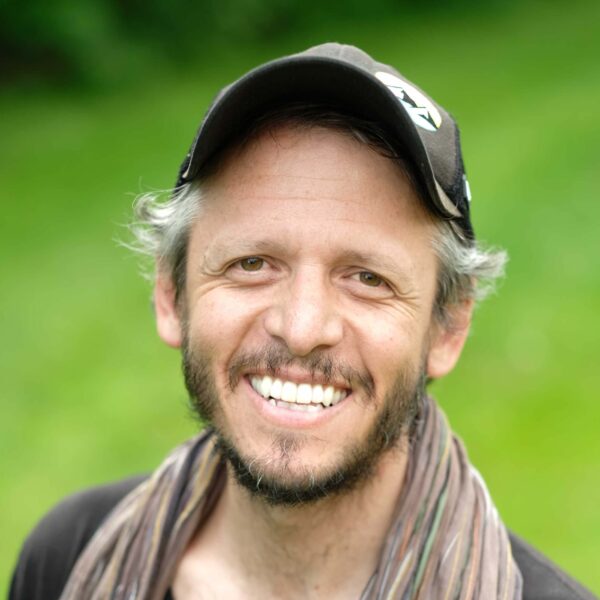
Leaders
Meet some of our featured leaders. Please note that these may not be your leaders for the program.

Stretching along the western edge of South America, Chile boasts a diverse landscape that includes the Andes Mountains, the Pacific Ocean, and the Atacama Desert. The country is also recognized for its rich cultural heritage, influenced by a blend of indigenous traditions and European customs.
Spanish is the primary language of Chile. Proficiency in Spanish is not required. However, if you study Spanish in school you will have opportunities to practice while communicating with local people. If you don’t speak Spanish you will have the opportunity to learn some basic language skills.
In Santiago and Valparaíso, Chile, temperatures range from 40–60ºF (4–15°C) during the day in July, which is winter in the Southern Hemisphere. In the northern desert, temperatures range between 25–70ºF (-4–21°C).
Chilean cuisine combines indigenous flavors with European influences, offering a delicious glimpse into the country's culinary identity. Typical meals may consist of asado (barbeque), seafood, rice, and vegetables.
Stretching along the western edge of South America, Chile boasts a diverse landscape that includes the Andes Mountains, the Pacific Ocean, and the Atacama Desert. The country is also recognized for its rich cultural heritage, influenced by a blend of indigenous traditions and European customs.
Spanish is the primary language of Chile. Proficiency in Spanish is not required. However, if you study Spanish in school you will have opportunities to practice while communicating with local people. If you don’t speak Spanish you will have the opportunity to learn some basic language skills.
In Santiago and Valparaíso, Chile, temperatures range from 40–60ºF (4–15°C) during the day in July, which is winter in the Southern Hemisphere. In the northern desert, temperatures range between 25–70ºF (-4–21°C).
Chilean cuisine combines indigenous flavors with European influences, offering a delicious glimpse into the country's culinary identity. Typical meals may consist of asado (barbeque), seafood, rice, and vegetables.
What to Expect
Review specific program expectations here. For more general information:
Whether your goal is to pursue a career in climate science, natural resource management, public policy, or science journalism, this summer program provides opportunities to dive deep into issues of climate change. Learn about risk and preparedness regarding extreme weather events, and the impacts of mineral and lithium mining upon water resources and pollution in Chile’s capital and northern desert. Students will engage with real-world knowledge, develop critical thinking skills, and discover how stronger partnerships and networks can effectively address climate challenges.
Pursue an independent project and explore an aspect of local culture of particular interest to you—interview local contacts and write a blog about natural hazards, compare climate impacts and risks in Chile with those at home, or design a short presentation about climate solutions in Chile.
Proficiency in Spanish is not required. However, if you speak or study Spanish in school you will have opportunities to practice while communicating with local people. If you don’t speak Spanish you will have the opportunity to learn some basic language skills.
To encourage full engagement and immersion in the Putney travel experience, we limit the use of cell phones and other devices on our High School programs. Students are allowed to use their phones in transit to the program, and keep their devices throughout. During in-country orientation, leaders will lock phones with a code, unlocking them for the second half of the program. During the tech-free portion of the program, students have the opportunity for a weekly call home according to a pre-arranged schedule. For more details, please see our FAQ.
This is a physically active summer travel program. The program spends a lot of time outdoors, and students should be prepared to hike for several miles on multiple occasions. July and August are winter in South America, so students should be prepared for cooler temperatures and shorter days. You do not need to be at peak fitness to participate, but it is important that you have a desire to be physically active, and that you are excited about trying all activities.
This program visits high altitude destinations—while in Chile’s Atacama desert, the group takes day excursions to high altitude locations outside San Pedro de Atacama, Chile (up to 14,000 ft or 4,267 m).
Students stay in doubles to quadruples in small hostels and family-run guesthouses. Leaders have singles in the same locations as students. Breakfasts are often taken on-site, with lunches and dinners out in cafes and restaurants.
The group eats most meals in hostels and restaurants and occasionally visits local markets to shop for picnic lunches.
What to Expect
Review specific program expectations here. For more general information:
Whether your goal is to pursue a career in climate science, natural resource management, public policy, or science journalism, this summer program provides opportunities to dive deep into issues of climate change. Learn about risk and preparedness regarding extreme weather events, and the impacts of mineral and lithium mining upon water resources and pollution in Chile’s capital and northern desert. Students will engage with real-world knowledge, develop critical thinking skills, and discover how stronger partnerships and networks can effectively address climate challenges.
Pursue an independent project and explore an aspect of local culture of particular interest to you—interview local contacts and write a blog about natural hazards, compare climate impacts and risks in Chile with those at home, or design a short presentation about climate solutions in Chile.
Proficiency in Spanish is not required. However, if you speak or study Spanish in school you will have opportunities to practice while communicating with local people. If you don’t speak Spanish you will have the opportunity to learn some basic language skills.
To encourage full engagement and immersion in the Putney travel experience, we limit the use of cell phones and other devices on our High School programs. Students are allowed to use their phones in transit to the program, and keep their devices throughout. During in-country orientation, leaders will lock phones with a code, unlocking them for the second half of the program. During the tech-free portion of the program, students have the opportunity for a weekly call home according to a pre-arranged schedule. For more details, please see our FAQ.
This is a physically active summer travel program. The program spends a lot of time outdoors, and students should be prepared to hike for several miles on multiple occasions. July and August are winter in South America, so students should be prepared for cooler temperatures and shorter days. You do not need to be at peak fitness to participate, but it is important that you have a desire to be physically active, and that you are excited about trying all activities.
This program visits high altitude destinations—while in Chile’s Atacama desert, the group takes day excursions to high altitude locations outside San Pedro de Atacama, Chile (up to 14,000 ft or 4,267 m).
Students stay in doubles to quadruples in small hostels and family-run guesthouses. Leaders have singles in the same locations as students. Breakfasts are often taken on-site, with lunches and dinners out in cafes and restaurants.
The group eats most meals in hostels and restaurants and occasionally visits local markets to shop for picnic lunches.
A Day in the Life: Santiago, Chile
- Morning
- Afternoon
- Evening
A Day in the Life:
Santiago, Chile
- Morning
- Afternoon
- Evening

Program Directed by
If you have questions or would like to talk further about this program, please get in touch!





